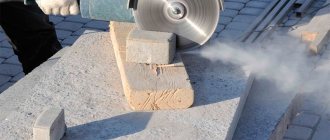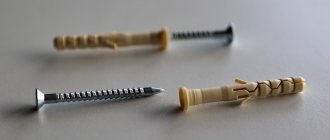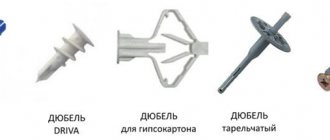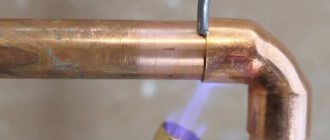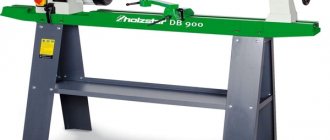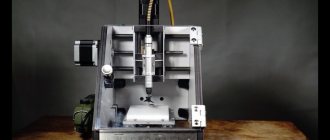A wood carving drill, equipped with various working attachments, is equipment with which you can apply not only various inscriptions and patterns, but also relief images to a wooden surface. To perform wood carving, you can use not only special engravers designed for working on this material, but also drills that are equipped in dental offices.
A carver may have several drills in his arsenal, used for different tasks.
Beginning craftsmen who find a wood engraver to be a complex piece of equipment should obtain the appropriate knowledge and master certain skills before starting work. There are many models of such devices on the modern market, which can cause certain difficulties when choosing, especially for those who are just planning to take up such an exciting activity as wood carving.
Types of drills
The variety of devices offered on the market comes down to three main types:
- drills for technical purposes;
- micromotors, or engravers for wood carving;
- mini-drills, or compact drills with a flexible drive.
They differ in purpose, size, power, and performance.
The design of both a powerful woodcarving drill and a micromotor is based on two main components: a high-speed electric motor and a replaceable tool mounted in a chuck.
Drills for technical purposes
Devices of this type are equipped with a fairly powerful engine and allow you to solve a wide range of problems. Structurally, they are divided into two blocks:
- Actually a drill. An electric motor is housed in a cylindrical housing. A collet or quick-release chuck is attached to its shaft.
- A power supply unit that houses a mains voltage converter of a transformer or pulse type.
- Power pedal. Allows you to free your hands for more precise holding of the device.
- Connecting cables.
Wood drill for technical purposes
The advantage of such carving drills is the ability to perform various operations on wood:
- drilling;
- boring;
- grinding.
As a disadvantage, it should be noted that the speed is relatively low compared to a Dremel for wood carving.
The market offers models from both domestic and foreign manufacturers. Domestic ones are affordable, but they lack the ability to operate for a long time without overheating, especially under high loads. They are well suited for hobbies; for professional use with significant volumes of work, it is better to opt for imported equipment.
Micromotors
Wood carving drills or micromotors are particularly compact, low power and high speed (up to 30,000 rpm). The attachments are also fixed to the working shaft of the electric motor.
Micromotors
Limited power does not allow the devices to achieve high productivity, but the low weight and size do not tire the hand, and high speeds allow you to perform the most delicate and filigree carving details.
Mini drills or compact drills with flexible drive
This class of devices are the battleships of the world of drills. Structurally, they differ in that they allow the installation of an attachment with a flexible drive shaft in place of the cartridge. Thus, the heavy drive device with the motor remains lying on the table (or suspended), and in the hand of the master there remains only a collet (or quick-release) clamp with the tool installed in it.
Such systems have high power (up to 200 watts) and develop high speeds (up to 30 thousand rpm). They are equipped with a large number of different cutters and abrasive attachments and allow you to perform a wide range of operations.
Hammer mini drill
The kit may also include a telescopic rod for attaching the device in a place convenient for the master.
How to distinguish a renovator from an electric chisel?
In many practical guides, the renovator is declared to be an electric chisel with an expanded set of functions. Thanks to various attachments, the renovator can carry out full production and processing of grooves, scraping and a number of other technological transitions. For all this you have to pay a much higher price. In practice, the renovator will add a few features to the user. For example, if the household already has a portable grinder, then by purchasing additional attachments (and many models come with them initially), you can also scrape or cut grooves without using a renovator.
The main difference between a renovator and an electric chisel is the kinematics of the movements that are performed by the working tool during its operation. For an electric chisel, this is mainly chiselling - a shock operation repeated many times, while for a renovator, the main type of movement is considered to be kinematic cutting, with relatively small and higher-frequency vibrations. Thus, the renovator processes wood using the torque developed by the engine as energy, and the electric chisel uses the reciprocating movement of the working head, which occurs with a certain force.
The practical difference between the circuits of these power tools, which are very similar in purpose, lies in the power of the electric motor, and - most importantly - in the number of revolutions that they develop. If a high-speed engine is installed on the product, this is a renovator; if a low-speed engine is installed, this is a drive chisel.
Experts believe that at speeds of 2500 per minute and above, power cutting of wood becomes kinematic. In practice, this mode starts at 1800 per minute. Therefore, the criterion for choosing an electric chisel is often the number of engine revolutions, and not its power.
The range of additional attachments that come with the compared power tools also largely determines the main purpose of the product. With the predominance of wide nozzles and cutting circles, this is a renovator, if the kit includes nozzles of a relatively small cross-section - an electric chisel.
Read more about the renovator at the following link
How to choose the right drill
The main criteria to consider when choosing a wood carving drill are as follows:
- engine power;
- revolutions;
- torque;
- weight;
- ergonomics.
Sadly, none of the devices on the market can simultaneously operate for a long time at high speeds and withstand high loads. Therefore, the best choice would be to purchase two drills:
- high-speed, low-power Dremel for making fine thread parts;
- powerful mini-drill for rough processing and sampling of large volumes of image background.
Many craftsmen also note that 30 thousand revolutions is a large reserve, and most operations are performed perfectly well at 10-20 thousand rpm.
When choosing, you should also pay attention to the set of attachments that will be offered in the kit.
Belt sander
This type of sander is used for rough grinding. Used for rough surfaces or for removing paint, it allows you to remove a fairly thick layer of wood. After the belt sanding, it is necessary to treat the surface with an orbital or eccentric sander for more precise processing.
What you need to know when choosing
- Sanding is a tedious and tedious process, often in an awkward position. A more powerful device will reduce the pain a little;
- But don’t overdo it: unskilled hands can easily make dents in the wood, which will take a lot of time to fix;
How to use a hand drill
Every home master wants to get a high-quality and clear image. To do this, you need to follow simple recommendations:
- Make a stencil from thick paper or thin cardboard.
- Using carbon paper, transfer the outline of the design onto the workpiece.
- Draw the contours of the design using needle cutters or small drills.
- Select background areas using large cutters.
- Apply the base, rubbing in the paint or stain.
- Sprinkle the product with bronze powder. Excess powder should be blown off or wiped off with a soft cloth.
Using a stencil can significantly simplify the engraving operation, especially in the case of a repeating pattern. You need to carefully work with the tool near the stencil so as not to damage it and be able to reuse it on other areas of the part.
Wood carving with a flexible shaft drill
For beginner engravers, it is better to use devices with a flexible shaft. A true professional who has gained considerable experience can successfully handle any tool.
Electric hacksaw
Also known as a reciprocating saw, and colloquially referred to as an "alligator saw"
According to the principle of operation, it completely repeats the classic hand hacksaw, only the reciprocating movement is provided by electrical energy, and not by your hand.
Unlike a circular saw, a reciprocating saw is messier, slower and rougher, but it is safer to work with. However, the alligator also has advantages: the depth of cut, which is limited only by the length of the saw blade (and they are replaceable, so you can always find consumables for any task in the store), and the ability to work in hard-to-reach places.
What you need to know when choosing
Carving Tips
As a material for carving wood with a drill, it is better to choose wood species with a dense, uniform structure, such as:
- Linden;
- beech;
- alder;
- pear.
Species such as oak, spruce, pine and ash are less suitable; they reflect the texture of the design much worse.
The first step is to transfer the outlines of the drawing to the board and cover the background to be removed with shading. The contour of the selected area is outlined with a small round drill with a star-shaped cross section. Next, the entire background area is selected. If it has a large area, you can take a larger drill to speed up the process.
Be sure to use a cutting depth limiter. The cutting depth should be adjusted and practiced on a rough piece of wood. After cutting through the background, it needs to be sanded with sandpaper. Next, you can start cutting out the details of the image itself.
Wood carving
Upon completion of the entire drawing, it is sanded and covered with stain. After drying, you need to go over it with sandpaper so as to wipe off the stained layer from the protruding areas and leave it on the background.
Electric planer
The main task is to plan. Can also be used for trimming boards and trimming.
What you need to know when choosing
Types and purpose of cutters and attachments
Drill attachments come in the following types:
- Abrasive attachments: cutting discs, cones, reverse cones and other rotating bodies. Designed for grinding thread parts.
- Wire brushes for roughing material.
- Steel cutters of different shapes. To perform basic operations - cutting out contours and sampling the background.
- Serrated blades. For processing thin relief details.
- Drill. For drilling through or blind holes.
- Balls for polishing and grinding thread parts.
- Felt circles. Serve for final polishing.
The cutters are made of high-strength and wear-resistant tool steel. Abrasive attachments are made mainly based on corundum. Abrasive attachments coated with diamond chips are particularly wear-resistant and precise.
Wood carving cutters
The collet clamp allows you to accurately secure and center the replacement tool. However, with strong lateral loads, its tightening must be checked periodically. The quick-release clamp does not have this drawback, but only tool shanks specially designed for it are suitable for it.
Fraser
As the name suggests, it is needed for milling, namely chamfering, cutting quarters and cutting grooves and splines.
What to pay attention to
All the tools collected here are most often suitable not only for woodworking operations, but also for working with other materials: plastic, metal, plywood. You just need to choose the right consumable.
Final finishing of products
To finish the wood surface, felt and felt circles are used. They are fixed in a drill and lubricated with polishing paste, which makes it possible to achieve an almost mirror-like state of the wood surface. After completing all stages of mechanical processing, soft wood varieties are coated with transparent varnishes in one or several layers. This coating will protect the product from moisture and significantly increase its durability.
After the varnish has dried, the surface is polished again to achieve perfect smoothness and a mirror shine. Hard types of wood are not varnished, emphasizing the original texture of the material. Sometimes they are slightly tinted.
Surface grinder
It is also called vibration.
Used for finishing wood after the belt has been passed over it. Also used for polishing.
What you need to know when choosing
- The “motion amplitude” parameter is responsible for the speed of work, but if it is large, the result of the work will lose its beauty;
- The ability to regulate the oscillation frequency will allow you to select the desired mode for any type of surface;
Application area
A metal engraving machine for workshops and garages is considered a universal tool. There are different ways to use engravers:
- drilling holes in glass, plastic, wood, ceramics, metal;
- drawing patterns on metal surfaces;
- carrying out repair work;
- milling of parts;
- grinding;
- cutting small workpieces or thin sheet metal;
- polishing of parts.
Engraver with alphabet
Caring for engraving equipment and tools
In order for the engraver to work longer and perform his tasks, he must take care of the tool.
Before turning it on, you need to inspect the drill to see if any dents, cracks, or chips have formed.
When operating the drill, a lot of dust and shavings come out, which clog the instrument. After each use, the engraver must be cleaned and any debris removed.
In the absence of forced ventilation, the engraver is turned off after 15-20 minutes. work to cool down.
Experienced carvers do not recommend working with dull cutters. It is necessary to change them or sharpen them on time.
Note! The difference in tooth sharpening between cutters affects the operation of the drill.
